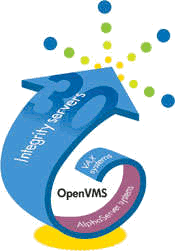Menu
C O N T E N T
A R T I C L E S
- SAN Design with Brocade Switches: Tricks and traps when implementing a multi cluster SAN solution.
- Planning for and installing a GS160: Considering the purchase of a Wildfire system? This article describes the site prep and some partitioning thoughts.
- Pros and cons of gigabit ethernet: What factors need to be taken into account when switching to gigabit ethernet?
- Reading a traceback dump: How to track down runtime errors in OpenVMS applications code.
- Detecting and correcting alignment faults in OpenVMS IA64: How to detect potential alignment fault issues.
- DCL coding standards: A personal set of standards for coding procedures in DCL.
- Class scheduling: An introduction to class scheduling on OpenVMS.
- Login speedups: How to do fast login procedures with 3GLs
S E A R C H
S T A N D A R D S
Why standards are important: Why these pages strictly adhere to W3C standards and recommendations.
Other standards maintained:
Why standards are important: Why these pages strictly adhere to W3C standards and recommendations.
Other standards maintained:
S Y N D I C A T E
